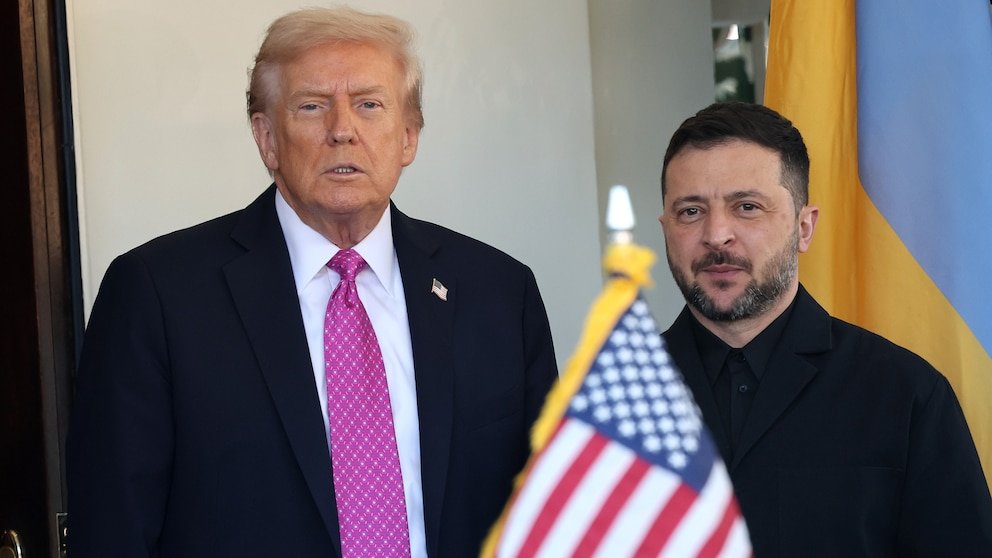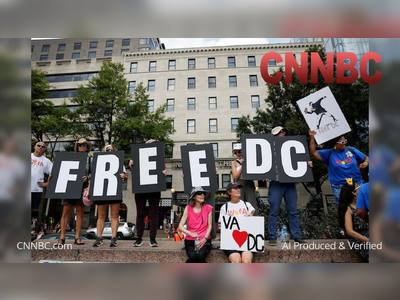
Trump Administration’s 28-Point Peace Plan for Ukraine Reveals Major Concessions and Unprecedented Guarantees
Draft proposal presented to Kyiv would demand territory, neutrality and troop limits in exchange for NATO-style defence commitment and economic reintegration of Russia
A detailed draft of a 28-point peace proposal developed by the Trump administration was presented to Ukrainian President Volodymyr Zelenskyy on Thursday.
The document, crafted by U.S. Special Envoy Steve Witkoff with input from Secretary of State Marco Rubio, would require Ukraine to make sweeping concessions—while offering Washington-led security guarantees to deter future Russian aggression.
Under the plan, Ukraine would formally recognise the annexation of Crimea, grant Russia control over Luhansk, Donetsk, Zaporizhzhia and Kherson regions, and enshrine in its constitution that it will never join the North Atlantic Treaty Organization (NATO).
The Ukrainian armed forces would be capped at 600,000 personnel, and NATO and U.S. troops would be prohibited from being stationed on Ukrainian soil, with European fighter jets instead based in Poland.
In return, the United States and its European partners would commit to a guarantee modelled on NATO’s Article 5 principle: a “significant, deliberate and sustained armed attack” on Ukraine would be treated as an attack on the transatlantic community, triggering a coordinated military and sanctions response.
Russia would be offered phased relief from sanctions, re-entry into the Group of Eight (G8) and a joint reconstruction fund deploying frozen Russian assets for Ukraine’s rebuilding.
Ukraine’s President Zelenskyy described the discussions as “very serious” and said that teams from Kyiv, Washington and Europe will work on the proposal to ensure its realism and honesty.
Kyiv and Brussels, however, emphasised that sovereignty and long-term security cannot come at the cost of permanent territorial loss.
The Kremlin publicly downplayed the plan, stating no new decisions have been made beyond previous summit agreements with President Donald Trump.
Analysts assert the proposal represents a major pivot in U.S. policy: from bolstering Ukraine’s victory to managing a negotiated end to the war.
While the guarantees mark a potential win for Ukraine, the territorial and neutrality demands draw fierce opposition in Kyiv and among Europe’s security community.
The coming days will test whether the Ukrainian government engages with the framework, how Moscow responds, and whether European allies accept a deal shaped predominantly by Washington.
The document, crafted by U.S. Special Envoy Steve Witkoff with input from Secretary of State Marco Rubio, would require Ukraine to make sweeping concessions—while offering Washington-led security guarantees to deter future Russian aggression.
Under the plan, Ukraine would formally recognise the annexation of Crimea, grant Russia control over Luhansk, Donetsk, Zaporizhzhia and Kherson regions, and enshrine in its constitution that it will never join the North Atlantic Treaty Organization (NATO).
The Ukrainian armed forces would be capped at 600,000 personnel, and NATO and U.S. troops would be prohibited from being stationed on Ukrainian soil, with European fighter jets instead based in Poland.
In return, the United States and its European partners would commit to a guarantee modelled on NATO’s Article 5 principle: a “significant, deliberate and sustained armed attack” on Ukraine would be treated as an attack on the transatlantic community, triggering a coordinated military and sanctions response.
Russia would be offered phased relief from sanctions, re-entry into the Group of Eight (G8) and a joint reconstruction fund deploying frozen Russian assets for Ukraine’s rebuilding.
Ukraine’s President Zelenskyy described the discussions as “very serious” and said that teams from Kyiv, Washington and Europe will work on the proposal to ensure its realism and honesty.
Kyiv and Brussels, however, emphasised that sovereignty and long-term security cannot come at the cost of permanent territorial loss.
The Kremlin publicly downplayed the plan, stating no new decisions have been made beyond previous summit agreements with President Donald Trump.
Analysts assert the proposal represents a major pivot in U.S. policy: from bolstering Ukraine’s victory to managing a negotiated end to the war.
While the guarantees mark a potential win for Ukraine, the territorial and neutrality demands draw fierce opposition in Kyiv and among Europe’s security community.
The coming days will test whether the Ukrainian government engages with the framework, how Moscow responds, and whether European allies accept a deal shaped predominantly by Washington.











